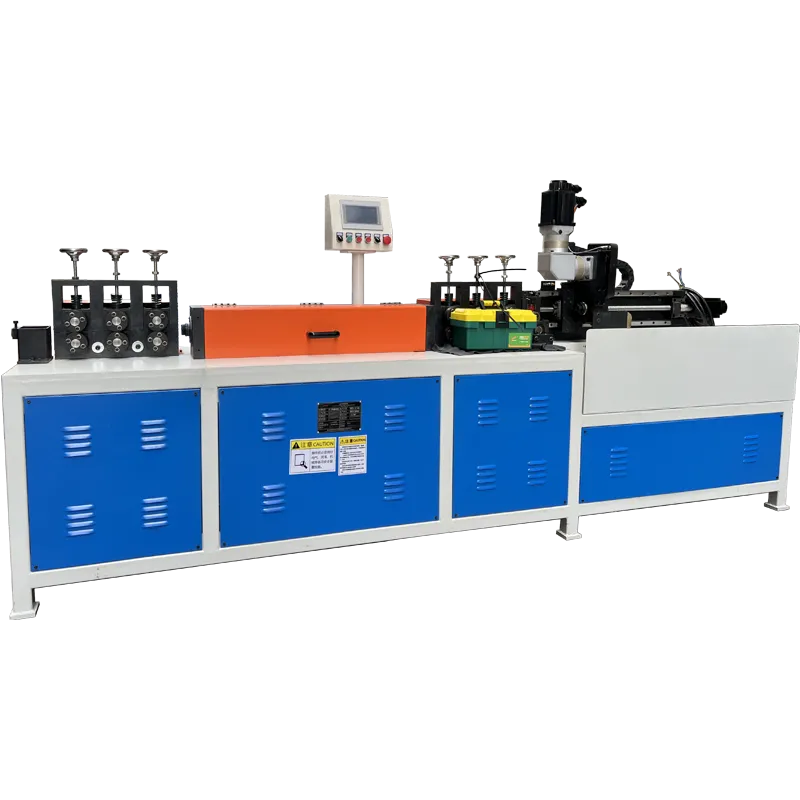Introduction
Selecting the right Wire Straightening Machine can be a decisive factor for manufacturers in industries ranging from construction steel to electrical wiring and precision components. Poorly straightened wires can lead to assembly errors, wasted material, and reduced product quality. The right machine ensures accuracy, efficiency, and long-term savings. In this article, we will take a deep dive into the importance of wire straightening machines, define what they are, walk through the selection process, analyze advantages and disadvantages of different types, and provide insights to help buyers make a smart, long-term decision.
Why a Wire Straightening Machine Matters
Wire is rarely delivered in a perfectly straight condition. It is typically coiled, which makes it impractical for direct use in fabrication or assembly. Straightening is essential because:
Precision Manufacturing: Straight wire is critical for producing springs, frames, welded structures, and precision parts.
Material Efficiency: Straightening reduces waste from bent or defective sections.
Operational Speed: Manual straightening slows down production and increases labor costs.
Consistency: Automated machines deliver uniform results that manual methods cannot match.
Quality Assurance: Straight wires improve downstream processes such as cutting, bending, and welding.
In short, investing in a wire straightening machine is about efficiency, cost reduction, and consistent product quality.

What is a Wire Straightening Machine?
A Wire Straightening Machine is a specialized piece of equipment designed to take coiled wire and process it into straight lengths or continuous straightened wire for further use. Depending on the model, machines can also integrate cutting, feeding, or coiling functions.
Key Components
Straightening Rollers or Dies: Apply force to remove curvature.
Feeding System: Ensures wire passes smoothly through the machine.
Cutting Mechanism: Optional, for producing straightened wire rods of specific lengths.
Control Panel: For adjusting speed, diameter settings, and tension.
Safety Features: Emergency stops, guards, and alignment sensors.
Types of Wire Straightening Machines
-
Rotary Straighteners
Use multiple rollers arranged in a helical pattern.
Suitable for medium to high production speeds.
-
Roller Straighteners
Employ a series of horizontal and vertical rollers.
Common in heavy-duty industrial applications.
-
Automatic Straightening and Cutting Machines
Combine straightening and length cutting.
Ideal for construction steel, rebar, and mass production environments.
-
Precision Wire Straighteners
Used in electronics, medical, or aerospace industries where tolerances are extremely tight.
How to Choose the Best Wire Straightening Machine
Step 1: Define Your Application
What wire material will you process? (Steel, stainless steel, aluminum, copper, etc.)
What diameter range?
What production speed is required?
Step 2: Match the Machine Type to Your Needs
For construction steel: automatic straightening and cutting machines are ideal.
For electronics or fine wire: precision straighteners are necessary.
For general manufacturing: rotary or roller straighteners work well.
Step 3: Evaluate Key Features
Adjustability: Can the machine handle multiple diameters?
Cutting Accuracy: If cutting is required, check tolerance levels.
Automation Level: Consider semi-automatic vs. fully automatic options.
Control System: Look for digital controls, programmable settings, and safety integration.
Durability: Machines should be built with hardened rollers and robust motors.
Step 4: Consider Productivity and ROI
Calculate production volume vs. machine speed.
Compare labor savings between manual methods and automation.
Factor in reduced material waste and improved product quality.
Step 5: Check After-Sales Support
Availability of spare parts.
Local service technicians or online remote support.
Warranty terms.
Pro Tip: Always request a trial run or customer reference before making a purchase decision.
Advantages and Disadvantages
Advantages
Increased Efficiency: Processes coils into straight wire quickly.
Labor Cost Reduction: Minimizes manual handling.
Versatility: Works with various wire materials and diameters.
Improved Quality: Ensures downstream processes are more reliable.
Disadvantages
Initial Investment: High-quality machines require capital expenditure.
Maintenance: Rollers and cutting blades require regular care.
Learning Curve: Operators must be trained to optimize output.
Energy Use: Large industrial models may have high power consumption.
Comparing Different Options
| Machine Type | Best For | Pros | Cons |
|---|---|---|---|
| Rotary Straightener | Medium production | Fast, versatile | Less precise for very fine wire |
| Roller Straightener | Heavy-duty, large diameter wire | Durable, handles thick wire | Slower adjustment |
| Auto Straightening + Cutting | Construction steel | High volume, labor saving | Expensive, large footprint |
| Precision Straightener | Electronics/medical wire | Tight tolerances, small diameters | Slower speed, higher cost |
Industry Insights and Buyer Search Intent Alignment
When buyers search for Wire Straightening Machine, their intent usually falls into two categories:
Informational: They want to understand what the machine is, how it works, and its benefits.
Commercial: They are comparing suppliers, features, and evaluating investment.
This article provides both levels of insight—educational depth for researchers and practical buying guidance for decision-makers.
Market Trends:
Increasing automation in construction and fabrication industries.
Growth in precision industries like electronics and medical devices driving demand for high-accuracy machines.
Rising focus on energy-efficient machinery.
Conclusion
A Wire Straightening Machine is an indispensable tool for any manufacturer that deals with coiled wire. From construction sites to aerospace assembly, the ability to deliver perfectly straight wire translates directly into higher efficiency, lower costs, and superior quality.
When choosing the best machine, remember to:
Define your application.
Match the machine type to your requirements.
Evaluate critical features such as adjustability, cutting accuracy, and automation level.
Calculate ROI based on productivity and waste reduction.
Ensure strong after-sales support.
By following these steps, manufacturers can confidently select a wire straightening machine that not only meets current needs but also supports future growth.


